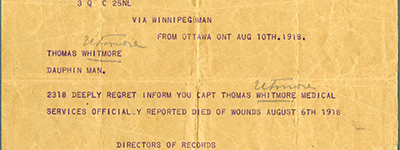CANADA HISTORY - DOCUMENTS FRONTIER
1903 Debate on Construction of Grand Trunk Railway
Analysis of the Document - (The Document follows below the Analysis)
The 1903 debate surrounding the construction of the Grand Trunk Pacific Railway was a crucial chapter in Canada's history of infrastructure development, revealing the nation’s ongoing efforts to expand economically and unify politically. The Grand Trunk Railway (GTR), a well-established railway company in Eastern Canada, sought to extend its reach westward by constructing a transcontinental railway line, aiming to rival the Canadian Pacific Railway (CPR). The debate was framed around the economic, political, and social consequences of building another major railway in the country, particularly its impact on the development of Western Canada.
At the heart of the debate were two key questions: should the federal government support another transcontinental railway project, and, if so, how should this massive undertaking be funded? The proponents of the project argued that the construction of the Grand Trunk Pacific Railway (GTPR) would further stimulate settlement in the prairies, improve access to global markets, and encourage economic competition. For them, another railway would not only open up new territories to agriculture and resource extraction but also prevent a transportation monopoly by the CPR, which had dominated western rail traffic since its completion in 1885.
The opposition, however, raised concerns about the financial risks involved. Many critics feared that the government’s backing of the project, which included significant financial subsidies and loan guarantees, would saddle taxpayers with an enormous debt burden. The experiences of the CPR's construction—which had required substantial government intervention and had been fraught with financial difficulties—were still fresh in the public mind. Critics questioned whether the country could afford to support such an ambitious endeavor and whether there was sufficient demand for another transcontinental railway.
Prime Minister Wilfrid Laurier’s government took a calculated risk in supporting the construction of the GTPR, believing that the potential long-term benefits outweighed the immediate financial concerns. Laurier envisioned the railway as a key part of his broader national development strategy, which sought to tie the vast Canadian landscape together and secure the economic future of the country by fostering westward expansion and improving access to international markets via ports on the Pacific Coast. For Laurier, the railway was a crucial component of nation-building, helping to ensure that Canada remained unified and economically competitive.
The debate also touched on geopolitical considerations, particularly the need to secure Canada’s sovereignty in the face of American economic and territorial ambitions. By promoting a second major railway to the Pacific, Laurier’s government aimed to solidify Canada's control over its western territories and reduce the growing influence of American railroads in the region. This, in turn, would help maintain the distinctiveness of the Canadian economy and ensure that Canadian resources and agricultural products flowed through Canadian, rather than American, ports.
The construction of the GTPR was approved in 1903, but the subsequent challenges it faced reflected the concerns raised during the debate. The project quickly ran into financial difficulties, and the Grand Trunk Railway struggled to complete the western section of the line. Ultimately, the federal government was forced to intervene, and in 1923, the entire Grand Trunk Railway system, including the GTPR, was nationalized and absorbed into the newly created Canadian National Railway (CNR). This marked a significant moment in the development of Canada’s national railway system and highlighted the long-standing tension between public and private interests in large-scale infrastructure projects.
In the broader context of Canadian history, the 1903 debate over the Grand Trunk Pacific Railway reflects the nation's ongoing struggle to balance economic growth with the need for financial stability and regional equity. While the construction of the railway played a crucial role in the settlement and development of Western Canada, it also underscored the financial risks inherent in such ambitious projects. The GTPR's legacy lives on in the Canadian National Railway, which remains a key part of the country's transportation network and a symbol of the federal government's role in shaping Canada's economic future.
In conclusion, the 1903 debate over the construction of the Grand Trunk Pacific Railway was a defining moment in Canadian history. It revealed the complexities of nation-building through infrastructure and the tension between public investment and economic expansion. Though the railway faced challenges and financial setbacks, its construction ultimately contributed to the unification of the Canadian West with the rest of the country, ensuring that Canada’s vast landscape remained connected, both economically and politically, in the face of immense challenges.

Mr Davis (Saskatchewan) [Liberal Member of Parliament]
Now, as to the necessity of this road, as I said before, I do not think it needs any argument whatever. The people of that country have farmed on shares, so to speak, with the Canadian Pacific Railway Company for twenty-three years. Those hon. gentlemen who make speeches in this House on this question allude to the grand scheme that was put through by the Conservative party, and the hon. member for Marquette alluded to it as the pioneer of progress in that country. Pioneer of progress! Why, Sir, that scheme has had the effect of keeping that country back for twenty- three years, and I say here without fear of contradiction that if the advice of the Liberal party, when that scheme was put through this House, had been taken, and the road had been laid out as proposed by the Liberal party through the northern portion of that country, and built where this road is going at the present time, in place of the 300,000 people in that country, we would now have two or three millions; I say that without fear of contradiction. When this bargain was going through that these gentlemen talk so much about, the Liberal party then, as they are to-day, were well seized of the people's needs; and if their advice had been followed we would have seen a different state of things in the North-west, and there would not have been such a crying necessity for this road as there is at the present time.
....I have pointed out that we pay freight rates twice or three times as high as the freight rates that are paid in the east. Now we are getting people into that country and hon. gentlemen opposite are trying to take credit for it; they say that thanks to the policy of the Conservative party immigration is coming into the country. Think of it. For eighteen years, until 1896, the people there were on the verge of starvation and when we brought a few people into the country by one railway they dodged out by another.
...And to-day they will tell you that they brought about prosperity that now prevails there. The hon. member for Marquette (Mr. Roche), for instance, in an eloquent peroration referred to the buffalo and the red men that once roamed on the western plains. If these gentlemen had been kept in power another seven years we would have had the red men back on the plains -- the buffalo are extinct practically and could not be got on the plains but the red men would have possession. The other settlers would have been starved out. The idea of these gentlemen talking about their having assisted to bring about the prosperity we enjoy at the present time in western Canada. They had as much to do with it as they had in creating the universe...
Cite Article : www.canadahistory.com/sections/documents
Source: Parliament, House of Commons, Debates, 28 August 1903, 10023, 10029.



